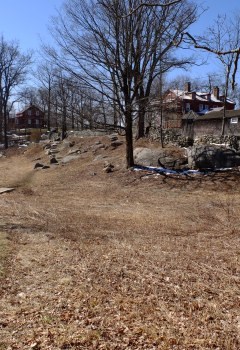
National Park Service, Weir Farm National Historic Site 
National Park Service, Weir Farm National Historic Site Thirty-four acres in size, is the Woodland Area located to the east of Nod Hill Road. This area contains a dense forested canopy created by a variety of hardwood trees, intermittent streams, and wetlands. Prior to World War II, upland meadows in this area were open and free of trees and shrubs, separated by low ground that was wet, boggy, and forested. Meadows Streams and channels Other Features During the Weir and Young tenures, repeated trips from the house to the fields, pond, woodlands, and dump east of Nod Hill Road created a circulation feature known as the Wagon Road. The road, a compacted earthen route, began near the northwest corner of the Truants' Meadow, continued along the meadow's eastern edge, and entered the woodland area to the south. Sperry Andrews often painted the landscape looking northwest from the Wagon Road around the marshes.The Wagon Road is presently in good condition with the park maintaining an approximate ten-foot wide swath along the historic roadbed free of woody vegetation. The original path to the pond including crossing a fishing bridge, seen in Julian Alden Weir's The Fishing Party (ca. 1915) and his earlier painting, Return of the Fishing Party (1906). While Mahonri Young's son, Bill Young, helped repair the bridge; it would eventually collapse. When the National Park Service acquired the property, only fragments remained. Today 
National Park Service, Weir Farm National Historic Site |
Last updated: February 26, 2015
